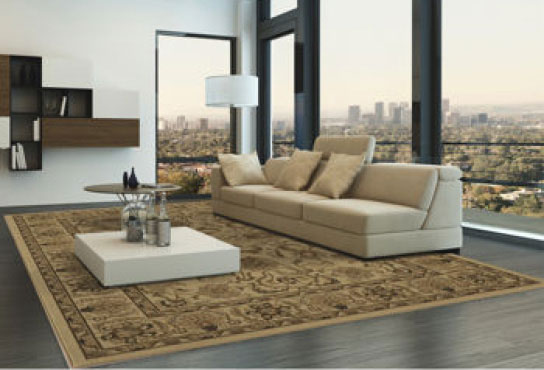
Choose The Ultimate Area Rug for Your Dining Room
In the market for a dining room rug, but not entirely sure how or where to start? Here are six suggestions to help keep the search short and sweet.

1. Take your cue from the shape of the room
If a neat and orderly space for entertaining is your goal, opt for an area rug that mimics either the shape of the room or the shape of the dining room table, which should be centered on the rug.

2. Bigger is always better
Measure the width of your dining room table — the rug should extend 24 inches beyond each side of the table so shifting chair legs won't catch the rug's edge.

4. Stay on the simple side of cleaning
Prepare for spills by choosing a rug that has a finer, smoother surface and can endure a good scrubbing. Or, choose an indoor-outdoor rug that is already treated to repel spills and stains.

5. A design state of mind
When furnishing a dining room, start from the ground up. Focus on making a rug selection first, setting the tone for your remaining choices of furniture, colors and decorative flair.

6. Playing with patterns
Neutral rugs serve as an anchor for more adventurous colors and textures elsewhere in the room. If your furniture is fairly subtle, try a rug with a pattern. If it's ornate, opt for a rug in a solid color.


